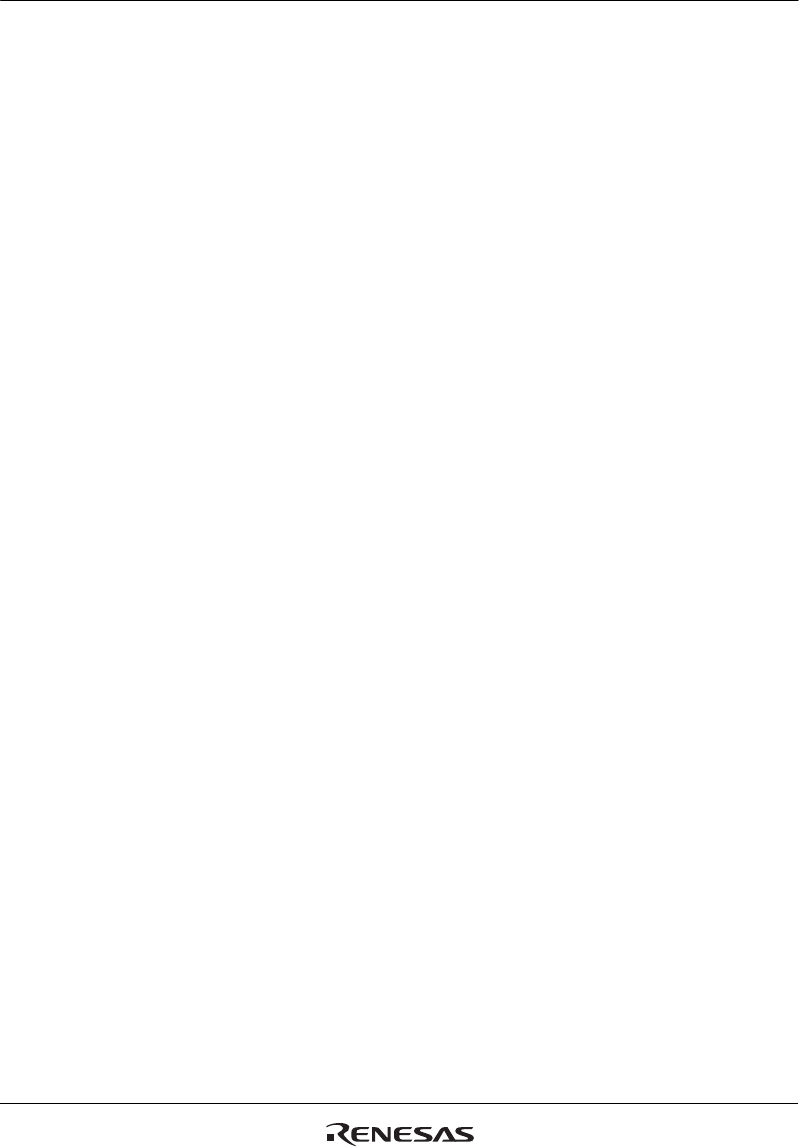
Section 7 Interrupt Controller
R01UH0134EJ0400 Rev. 4.00 Page 191 of 2108
Sep 24, 2014
SH7262 Group, SH7264 Group
7.6 Operation
7.6.1 Interrupt Operation Sequence
The sequence of interrupt operations is described below. Figure 7.2 shows the operation flow.
1. The interrupt request sources send interrupt request signals to the interrupt controller.
2. The interrupt controller selects the highest-priority interrupt from the interrupt requests sent,
following the priority levels set in interrupt priority registers 01, 02, and 05 to 22 (IPR01,
IPR02, and IPR05 to IPR22). Lower priority interrupts are ignored*. If two of these interrupts
have the same priority level or if multiple interrupts occur within a single IPR, the interrupt
with the highest priority is selected, according to the default priority and IPR setting unit
internal priority shown in table 7.4.
3. The priority level of the interrupt selected by the interrupt controller is compared with the
interrupt level mask bits (I3 to I0) in the status register (SR) of the CPU. If the interrupt
request priority level is equal to or less than the level set in bits I3 to I0, the interrupt request is
ignored. If the interrupt request priority level is higher than the level in bits I3 to I0, the
interrupt controller accepts the interrupt and sends an interrupt request signal to the CPU.
4. The CPU detects the interrupt request sent from the interrupt controller when the CPU decodes
the instruction to be executed. Instead of executing the decoded instruction, the CPU starts
interrupt exception handling (figure 7.4).
5. The interrupt exception service routine start address is fetched from the exception handling
vector table corresponding to the accepted interrupt.
6. The status register (SR) is saved onto the stack, and the priority level of the accepted interrupt
is copied to bits I3 to I0 in SR.
7. The program counter (PC) is saved onto the stack.
8. The CPU jumps to the fetched interrupt exception service routine start address and starts
executing the program. The jump that occurs is not a delayed branch.


















